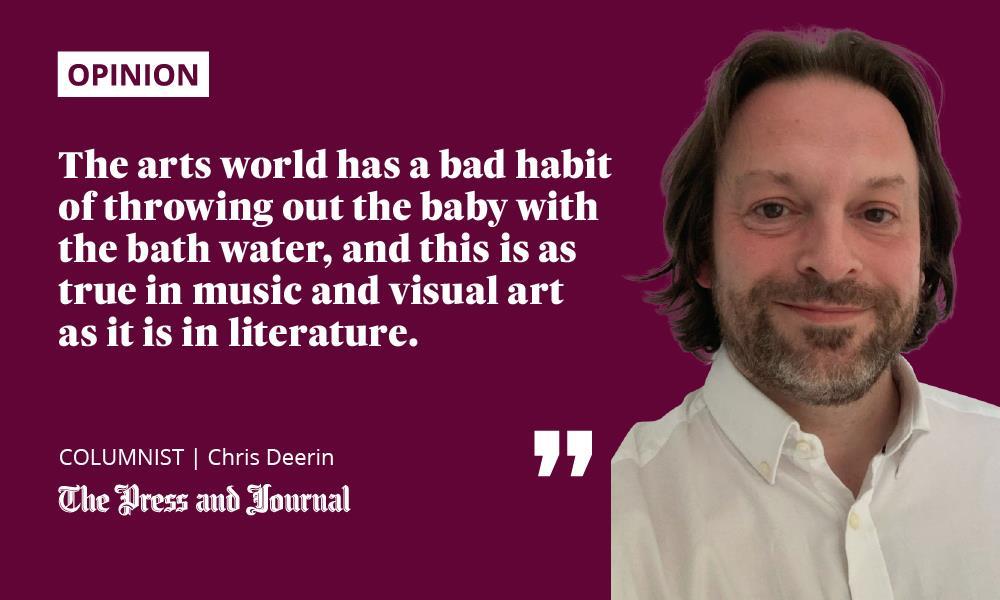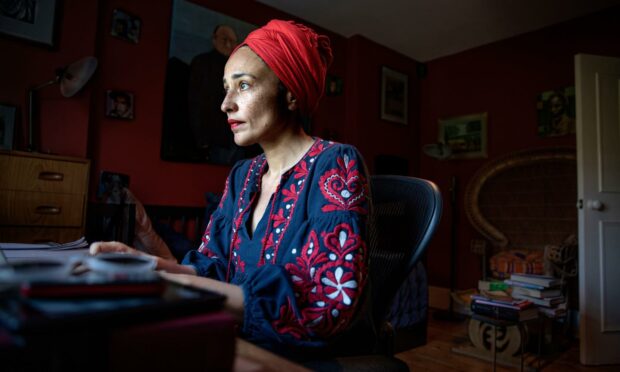Recently enough that it still reddens my cheeks, I tended almost exclusively to read male authors.
In my defence I would quote Vladimir Nabokov, who once said he was entirely homosexual in his literary tastes. Actually, I was quoting Martin Amis, the still-just-about-reigning sage of masculinity, who was quoting Nabokov. I was a boy who wanted to read boys on what it’s like to be a boy.

When a female friend described my bookshelves as “a bit of a sausage fest” I decided to give myself a shake, so to speak. Today I probably consume more books by women than men – after all, I’ve a lot to catch up on. This has vastly improved my reading life and brought many benefits, and it is a pleasingly incomplete journey. But as my personal pantheon has become more gender balanced – welcome, Ms Spark, Ms Murdoch and Ms Bainbridge; grab a pew over there, Zadie, beside Elizabeth Taylor, Barbara Pym and Penelope Fitzgerald; not you, Sally Rooney – I’ve watched the literary world turn on the lads with the kind of savagery and spleen it does better than most.
The reign of the Jonathans is over
It seems rare now that a week goes by without some venomous hatchet job denouncing a particular kind of male author and his works. The point is put, fairly, that the history of the novel has been dominated by white, straight, middle-class, Western men, to the exclusion of more diverse voices, whether in relation to race, sexuality, gender, class, or geography. A scan of the shelves in Waterstones reveals the energy and determination with which publishers are seeking to put this right. This, of course, reflects a wider, welcome move to embrace and encourage diversity across society.
Perhaps the most talked-about swing of the axe is in the latest edition of Vanity Fair, where a writer called Emily Gould lays waste to what she terms “the Jonathans”. This is shorthand for three of today’s most widely-read literary authors, all of whom share that first name – Franzen, Lethem and Safran Foer. Each is white, middle-aged, straight, educated and celebrated. Gould expands her catch-all to include novelists who, inconveniently for her thesis, are not called Jonathan, such as Michael Chabon and Jeffrey Eugenides
Novelists once excluded from the cultural narrative are finally getting their chance in the spotlight. Is it too late? https://t.co/JRGdEKW3Z3
— VANITY FAIR (@VanityFair) August 25, 2021
Her gripe is that these men seemed to follow a gilded glide path to success, were handed chunky advances by the industry for their earliest books, received unanimously delirious reviews, and so avoided the struggle for attention, relevance and riches that bedevils so many of their peers. They “occupied that rarefied sliver of the market where literary fiction and huge cash cow overlap,” writes Gould.
As she admits, times are changing and “books by people other than straight white men have lately dominated prizes and review coverage.” Of the 10 most recent Booker winners, only two – George Saunders and Richard Flanagan – might at a push fit the Jonathans template. This year’s shortlist is announced on September 14 and will be chosen from a longlist of 13 novels from markedly diverse writers. Of these, Kazuo Ishiguro is the closest to Gould’s stereotype, but as a British-Japanese Nobel laureate who produces books of woozy, claustrophobic power, his work and background are very unJonathanlike.
‘When you don’t see yourself on the page you don’t exist’
I have no beef with a rebalancing. Quite the opposite: as a reader I stand only to benefit. Some magnificent new talent is being unearthed, while overlooked writers of yore are being reassessed and given their rightful place in the front ranks. The broadening audience for the outstanding minds of Toni Morrison, James Baldwin and Octavia Butler, among many others, is a lucky one. There are vital new books from gay and trans authors, and it is possible to read challenging and entertaining works in translation from Africa, South America, Asia and Eastern Europe.
The thing is, the arts world has a bad habit of throwing out the baby with the bath water, and this is as true in music and visual art as it is in literature. It is not enough to enjoy and promote the new; the old must be denounced as degraded, misguided and culpable. This cultural Maoism is probably inevitable, and is perhaps even essential for the renewal of each artform, but it does not come without consequence or loss.
“I’m inevitably going to be interested in novels by white male authors reflecting on the seismic shift in their – and my – status. I just won’t expect them to win any prizes
Jessie Tu, a young author and the Australian daughter of Taiwanese parents, recently gave an interview in which she said, movingly, that “when you don’t see yourself on the page… you literally don’t exist.” She would, she added, “probably never read another novel by a straight white male.”
Fair enough, but my own inner life would be significantly diminished without the books of Jonathan Lethem and Michael Chabon, and particularly without Nabokov or Amis. I’m inevitably going to be interested in novels by white male authors reflecting on the seismic shift in their – and my – status. I just won’t expect them to win any prizes.
Chris Deerin is a leading journalist and commentator who heads independent, non-party think tank Reform Scotland










